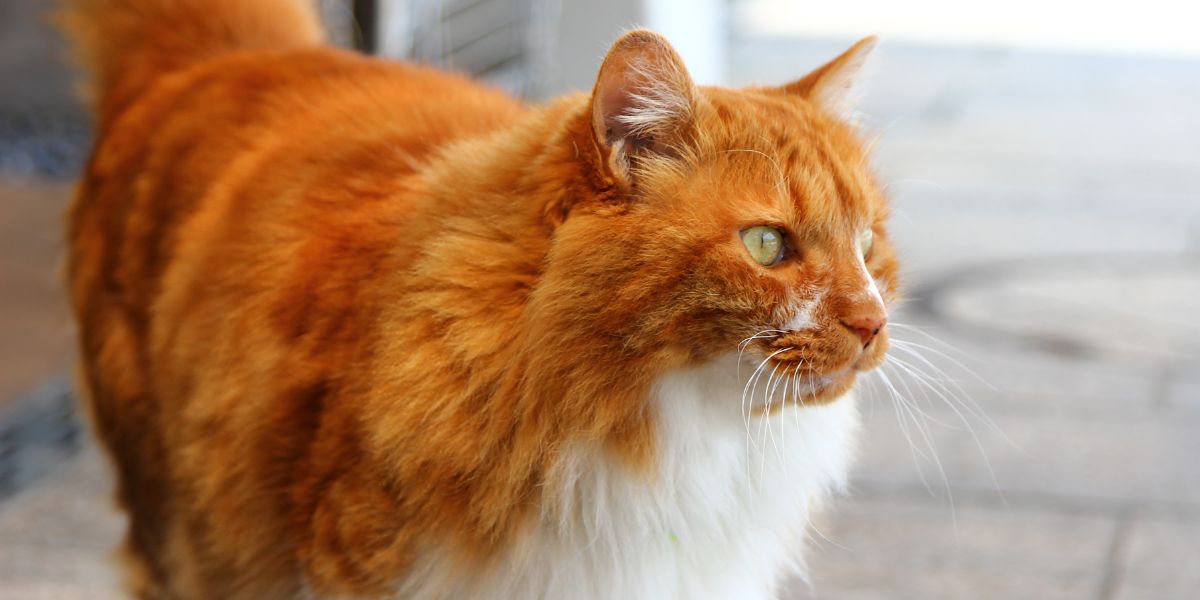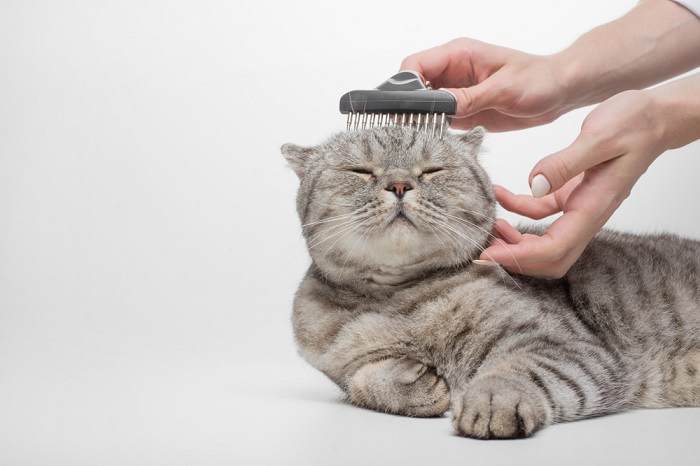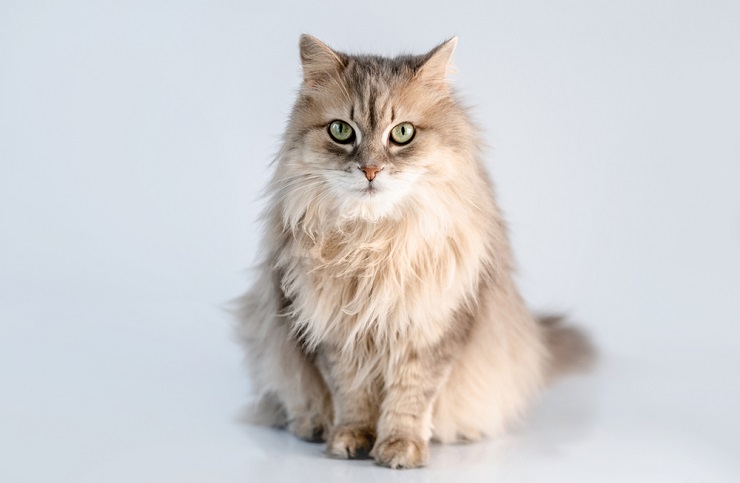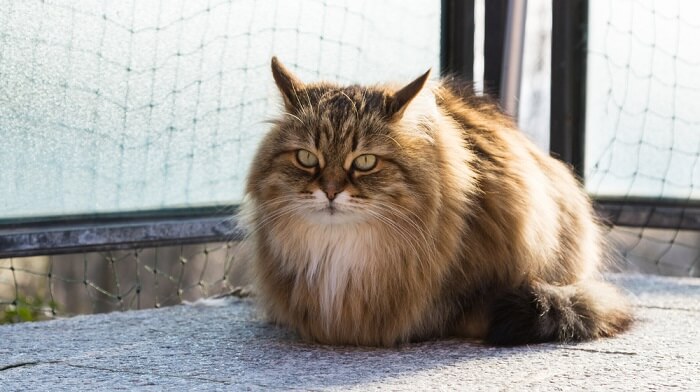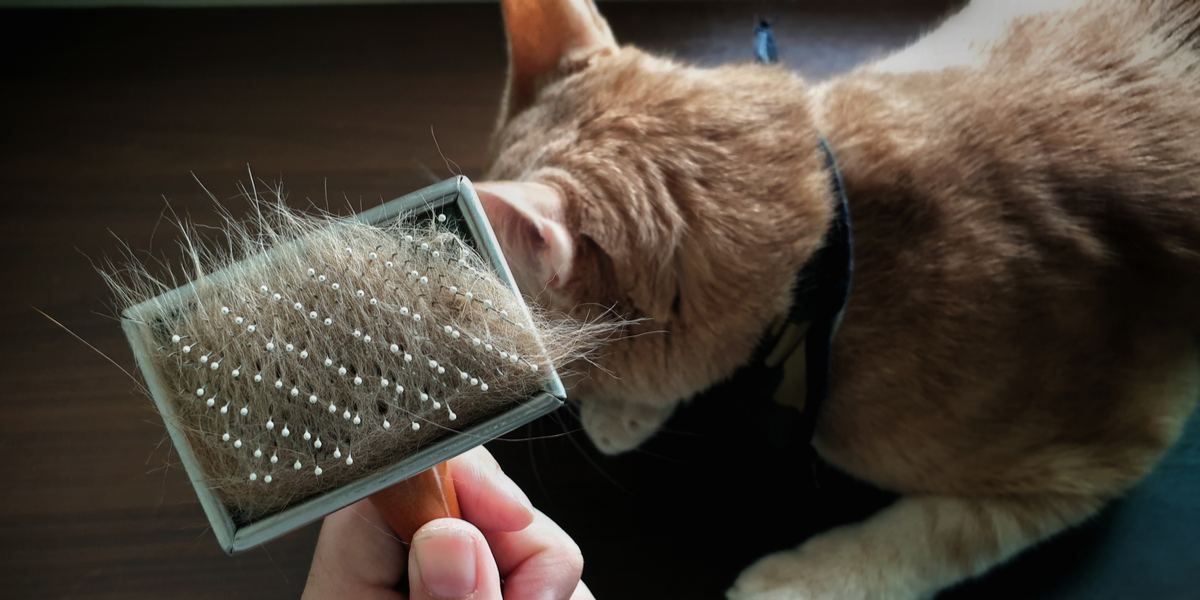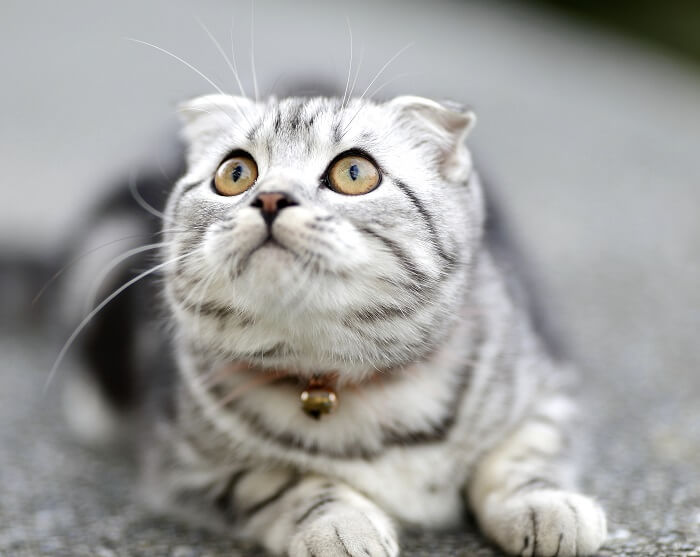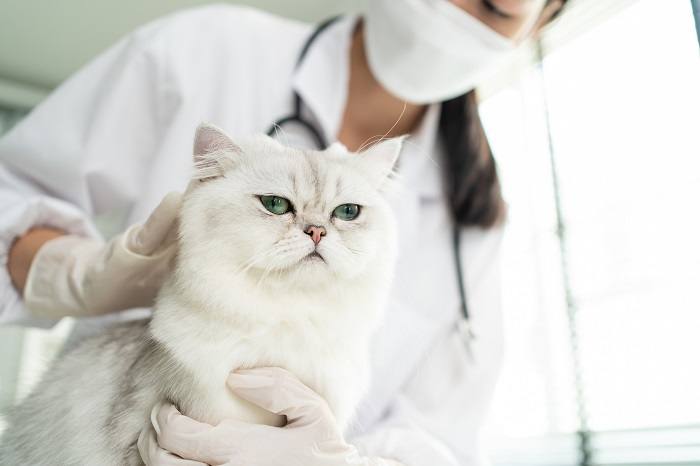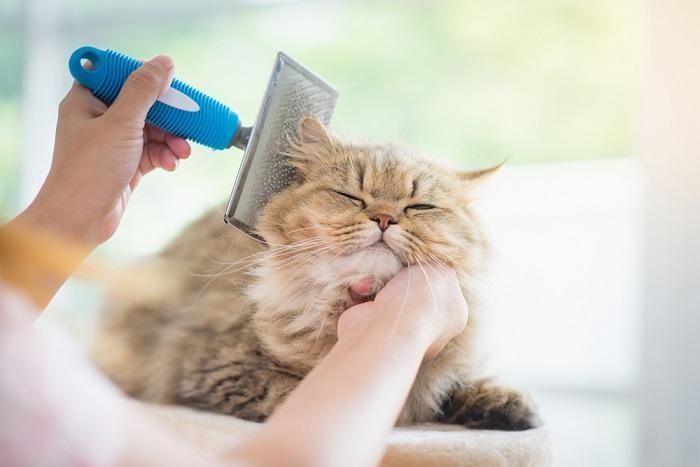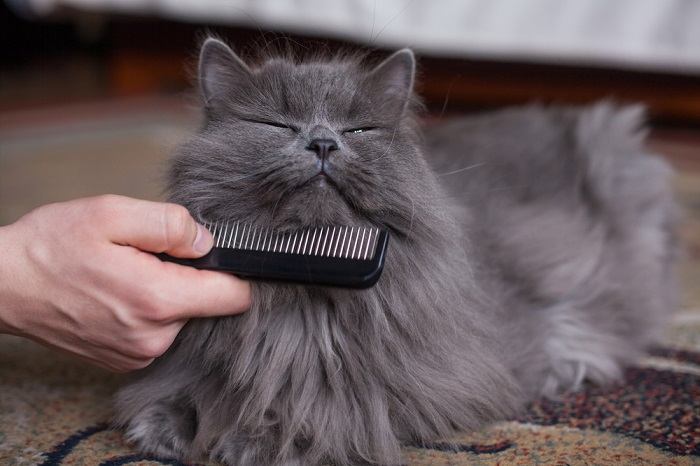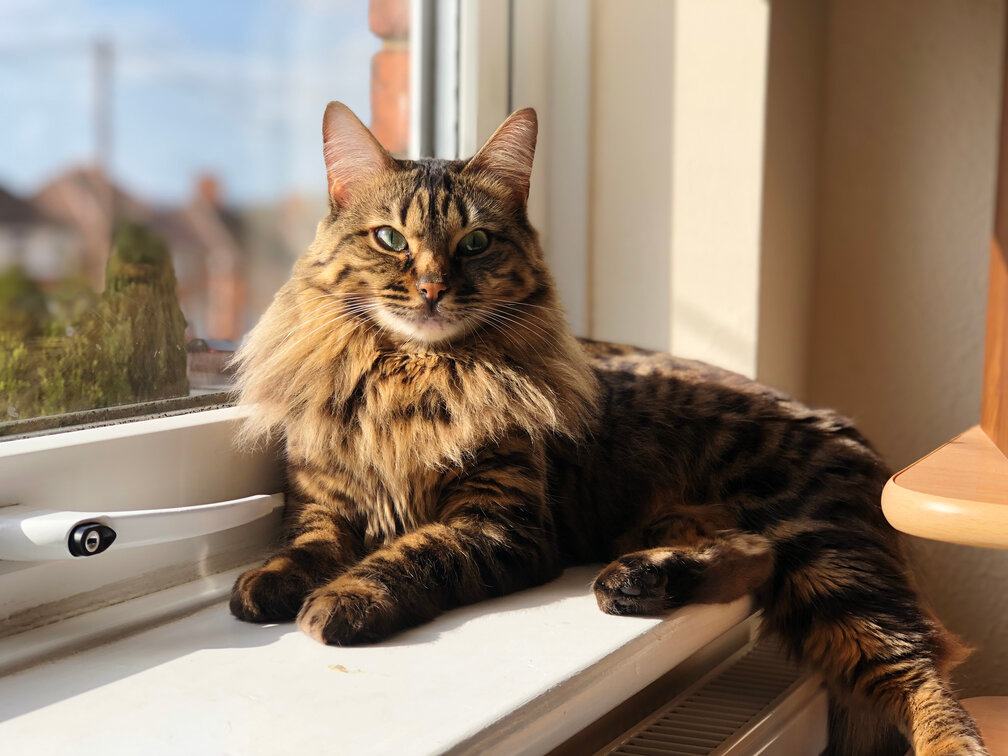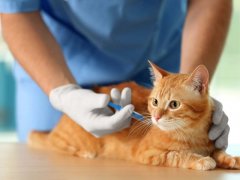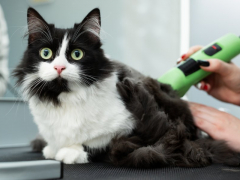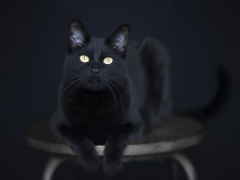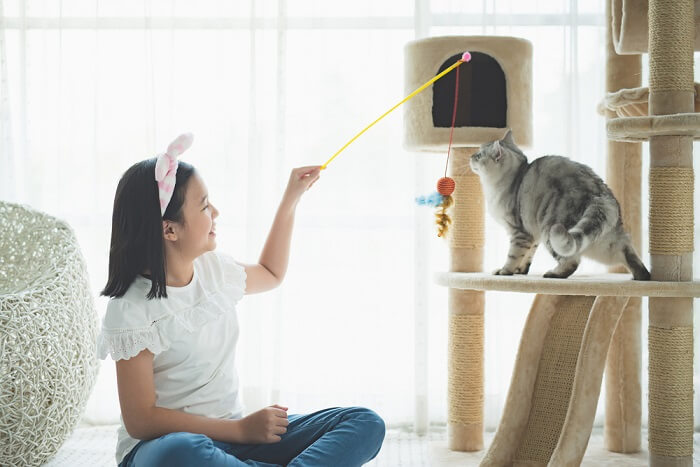Much the same as humans, cats come in all different shapes, sizes, and colors. Your cat’s fur is usually the first thing you notice, and their magnificent coats play many important roles.
Different cat coats coats require different combs and brushes to keep the coat healthy and tangle-free. Double coats have two layers: a short, thick undercoat close to the skin and a longer, thinner topcoat (also called guard hairs). Double-coated cats need a thorough brush and comb two to three times a week, plus a smaller brush over once daily.Key Takeaways
Cats’ coats can be shorthaired, longhaired, curly-haired, or hairless, and they can have single or double, and even triple coats. Are you wondering which coat your own cat is sporting? Read on to find out why it is so important and how to tell in four easy steps.
The Anatomy Of A Cat’s Coat
Both shorthaired and longhaired cats can have double coats.
Cats that have a double coat have two layers. One is called the undercoat. This is a layer close to the cat’s skin made up of thick short hair that helps keep them warm by insulating heat. The second layer is the topcoat (or guard hairs), made up of longer, thinner hairs, which is the hair we see when we look at our cats.
Also Read: 11 Best Cat Brushes & Deshedding Tools For Long & Short Haired Cats
Why Is It So Important To Know What Type Of Coat Our Cat Has?
Double-coated cats have special grooming needs.
As cat owners, we need to know what sort of coat our cats have as it’s our responsibility to groom their coat to keep it healthy. Cats’ coats can easily get tangled and matted. This is incredibly painful for your cat. If there are large mats, cats may need sedation to have them removed, as it can be quite traumatic for them.
The tools and techniques used to groom your cat’s coat will vary depending on what type of fur they have. Here are the ways you can tell which coat your cat has.
1. Part Their Coat
Part your cat’s hair along the back and look for a short, dense layer of hair close to the skin.
The easiest way to determine which type of coat your cat has starts with a good feel with your hands. (This also means a bonus cuddle for you and them!)
Next, part the hair—the best place to do this is along their back. Next, have a look at what is underneath. If your cat has a double coat, you should be able to see a short, almost fuzzy layer of thick fur close to the skin that is very dense.
On top of the dense hair is finer, smoother, longer hair. This is a double coat! If your cat only has a single coat, then you will only be able to feel and see the top layer.
Also Read: How To Keep Cats Cool In Summer
2. Assess How Much Your Cat Sheds Hair
Cats with double coats usually shed more than cats with single coats.
All cat breeds will shed their coat at some point, but cats with a double coat will shed differently from single-coated cats.
Double-coated cats generally shed more hair because there is more hair to lose. You will probably notice this when cleaning your house, cat hair is notorious for getting in all sorts of places!
Temperature changes also influence how double-coated cats shed. As the weather gets warmer, cats with a double coat tend to lose the warmer insulating underlayer to help them keep cool.
Also Read: Meet 8 Of The Fluffiest Cat Breeds On Earth
3. Look Up The Breed
If you have a purebred cat, you cat’s breed standard should mention if the breed has a double or single coat.
Something else that is really helpful to give us some clues is looking up the breed standard.
Your cat’s coat is determined by their genetics. If you know the breed of your cat and can confirm that it is a purebred cat, you can check if they have a double coat. Some breeds of cats have evolved in colder climates historically, so they are known to have a double coat.
Some cat breeds that we know have double coats include:
Also Read: The Ultimate Persian Cat Grooming Guide
4. Speak To Your Veterinarian
You veterinarian can quickly tell you what type of hair coat your cat has.
If you are really unsure and would like an answer, you can book an appointment with your veterinarian or veterinary nurse to assess your cat’s coat. You may also be able to ask a cat groomer.
They will be able to tell you what sort of fur your cat has and also advise you on how to groom your cat and what tools to use. They will also be able to check for mats or tangles and advise you on how healthy the coat is.
You may now be wondering why it’s so important to know what sort of coat your cat has. As mentioned above, we need to help our cats maintain a healthy coat and different coats require different combs and brushes. They will also require different amounts of grooming.
Also Read: 12 Rare Coat Colors and Patterns In Cats
How To Maintain A Double Coat
If your cat has a double-coat, brush completely out at least twice a week, making sure to get down to the skin.
Double-coated cats will require a thorough brush and comb two to three times a week, and a smaller general brush once daily. Think of their coat more like our human hair. It is much more likely to get tangled and knotted so will need brushing very frequently. Both males and females require the same amount of coat maintenance.
It’s a nice habit to get into with your cat as it’s a lovely way to bond with them and usually, both you and your cat find it very relaxing and therapeutic if you start doing it from a young age to get them used to it. Another advantage of grooming them daily is that it will reduce the hairs shed into the environment and give your vacuum a little break.
If your cat turns tail at the sight of a brush, you can try a grooming glove. These are worn on your hands and have soft, short bristles made of rubber, which means you can stroke your cat and remove some of the loose hair at the same time.
Also Read: Best Cat Grooming And Deshedding Gloves
Double-coated cats also require bathing if their coats get dirt on it or debris stuck in it. Depending on how adventurous your cat is, they might get things stuck in their undercarriage, which you wouldn’t necessarily notice unless you are grooming them regularly so it’s very important to handle them daily.
Another vital job you must carry out with double-coated cats is weekly ear cleaning. Due to the increased amount of hair in and around their ears, it’s much more likely that the opening of the ear canal will get congested or blocked. If this sounds a bit daunting, you can visit your veterinarian and they will demonstrate how to clean the ear and recommend a safe cleaning product.
If you are at all worried about anything you see in your cat’s ear, be sure to take them to your veterinarian to get checked out too as ear infections can be very nasty and painful.
Also Read: How To Reduce Cat Shedding In 9 Simple Steps
Which Tools Should I Use To Groom My Cat?
A wire-bristle brush or long-toothed comb allows you to brush your cat down to the undercoat.
If your cat has a double coat, you will need a brush with wire bristles to ensure you are reaching the undercoat as well. You can purchase special brushes that have wire bristles of different lengths that are very useful for removing loose hair on longhaired cats with double coats.
You can use a comb if your cat will tolerate it on the long hairs, especially on their legs and along their back, to remove any small knots.
If your cat has a single coat, you can use a soft bristle brush to remove any tangles. Some curly haired cats have a unique curly coat that looks like their hair has been crimped. This is due to a gene mutation. Curly haired breeds include Devon Rex and Cornish Rex. These cats don’t usually require any grooming or brushing.
Hairless cats such as the Sphynx breed don’t have any fur, but they still need a lot of maintenance as their skin gets greasy and dirty. They require a wash weekly ensuring all their cracks and crevices are thoroughly cleaned and dried.
Also Read: The Ultimate Persian Cat Grooming Guide
Final Thoughts
Double-coated cats need a good amount of help to keep their beautiful coats in good condition.
There’s a lot more to our cat’s coats than meets the eye! Whether your cat is ginger, tortoiseshell, black, white, lilac, cream, chocolate, or any other combination, their coats require some TLC from us as owners.
Double-coated cats are majestic animals, but their coats are very high maintenance. As responsible owners, it’s important that we know what type of coat our cat has so that we can help look after them properly.
There are many benefits to grooming your cat including improved fur health, reduction in painful tangles and mats, and a cleaner house, not to mention it’s a wonderful opportunity to bond with your cat and have some quality time together.
Also Read: Repetitive, Excessive And Compulsive Grooming In Cats
Frequently Asked Questions
Is it OK to shave a double coat?
Shaving a double-coated cat is a big no-no (unless it is for veterinary reasons, such as removing the coat to prepare for a surgical procedure).
If you remove your cat's coat, your cat won't be able to keep themselves warm as they use their coats to regulate their body temperature, if they get wet their body temperature will decrease very quickly. If shaved, they will be without protection from the sun. A cat's coat also helps conceal them from prey and predators.
What is a triple coat in cats?
Some cat breeds that originated from extremely cold climates have three layers of fur, the usual undercoat, and two more coats on top. One such breed is the Siberian cat. Siberians shed a lot, so be warned you will need a strict grooming regime with these beautiful creatures.
What are the four types of hair found on cats?
Cats can have a combination of:
- Down hair
- Awn hair
- Guard hair
- Vibrissae
Down hair is the thick insulating undercoat. Awn hair makes up most of the cat's visible hairs, contributes to the cat's coat color, and also helps with insulation and protection of the down hairs. Guard hairs are coarse and thicker, and they help to keep your cat dry. The vibrissae are the whiskers, which are thick strong tactile hairs that help your cat gauge the spaces they fit into and help them move around in the dark.
How do I know if my cat has a good coat?
If your cat's coat is in good condition, it should be shiny and smooth with no tufts or bumpy sections. There should be clear skin underneath the coat with no bald patches, scabs, or crusting. The skin should show no redness or swelling, and your cat usually will enjoy being stroked and not show any sign of discomfort.
